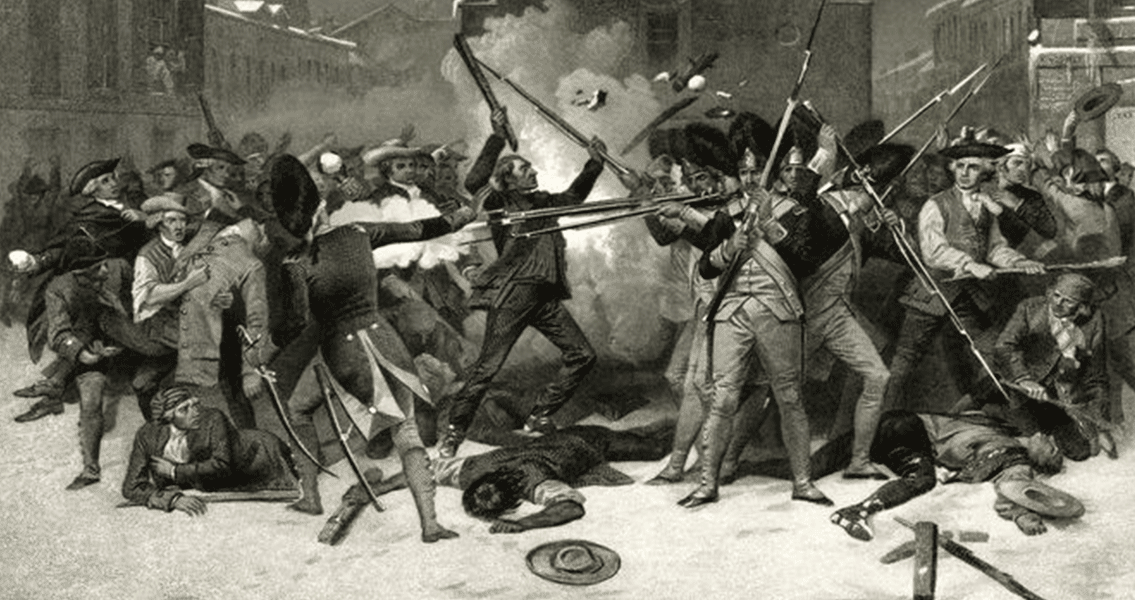<![CDATA[On December 12th 1770 the trial of the British soldiers involved in what is now called the 'Boston Massacre' came to a close. The trial was hugely important, as the five men they were accused of killing are regarded by some historians as the first casualties of the American Revolutionary War. The verdicts at the trial found two British soldiers guilty of manslaughter, their punishment was to have their thumbs branded with the letter 'M' for murder. The commanding officer of the troops, Captain Thomas Preston, was acquitted. In an attempt to demonstrate the impartiality of the court, no Bostonians were present on the jury, and the British soldiers were represented by Patriot leaders; John Adams and Josiah Quincy. On a snowy March 5th night in 1770 the massacre itself took place. A lone British sentry, on guard outside Boston's Customs House, was taunted and heckled by a mob of colonists that had formed around the building. Preston responded by ordering his detachment of seven soldiers to fix their bayonets and move outside to support their comrade. The colonists reacted by hurling snowballs and other objects at the British troops. Private Hugh Montgomery was hit by one of the objects thrown, causing him to discharge his rifle into the crowd. Moments later the rest of the soldiers had opened fire in a wave of panic. When the shooting stopped, and the chaos abated, five colonists - Crispus Atticus, James Caldwell, Patrick Carr, Samuel Gray and Samuel Maverick - were either dead or dying, while six others were injured. Boston had been the centre of escalating tension between British forces and the Colonists for several years prior to the events of March 5th 1770. In June 1767 the British Parliament passed the Townshend Acts, which placed heavy import duties on items such as tea, lead, glass, paint and paper, and created a Board of Customs Commissioners for America, which was stationed in Boston's Customs House. Bostonians protested the new legislations, which had been passed in Parliament without any representation or consultation from the American Colonies. Nonimportation and nonconsumption movements started, in an attempt to undermine the new measures, while the work of the British customs officials was obstructed as much as possible. In February 1768 the officials requested support from the British government so they could carry out their duties safely, and in October of that year British troops arrived in the colonies. Constant antagonism between the citizens of Boston and the soldiers trying to enforce British laws escalated when some American Patriots attempted to discourage merchants from selling British goods by vandalising stores or intimidating customers. On 22nd February 1770 eleven year old American Christopher Seider was killed by a British soldier firing into a crowd, quickly becoming a martyr of the Patriot cause. Just three days before the Massacre, a clash between soldiers and workers at St John Gray's ropewalks signaled just how precarious the situation had become prior to the events of March 5th. The killings on March 5th inevitably pushed the American colonies to breaking point. The soldiers were immediately imprisoned, and a propaganda war broke out, with pro-British Tories blaming Patriot aggression, while the Patriots put the confrontation down to a British conspiracy. Although the name 'Boston Massacre' was only used to refer to the event years later, Patriots quickly started to portray the 5th March as a tragedy and a brutal slaying of innocents. The trial, at least temporarily, relieved tensions in the colonies, but the Colonists' resistance to the Townshend Acts and the presence of British soldiers demonstrated the growing power of the Patriot movement. Five years later, the American Revolutionary War started when British troops skirmished with American militiamen at the battles of Lexington and Concord. ]]>
The Trial of the Boston Massacre Soldiers
